Teacher welcome letter to parents template
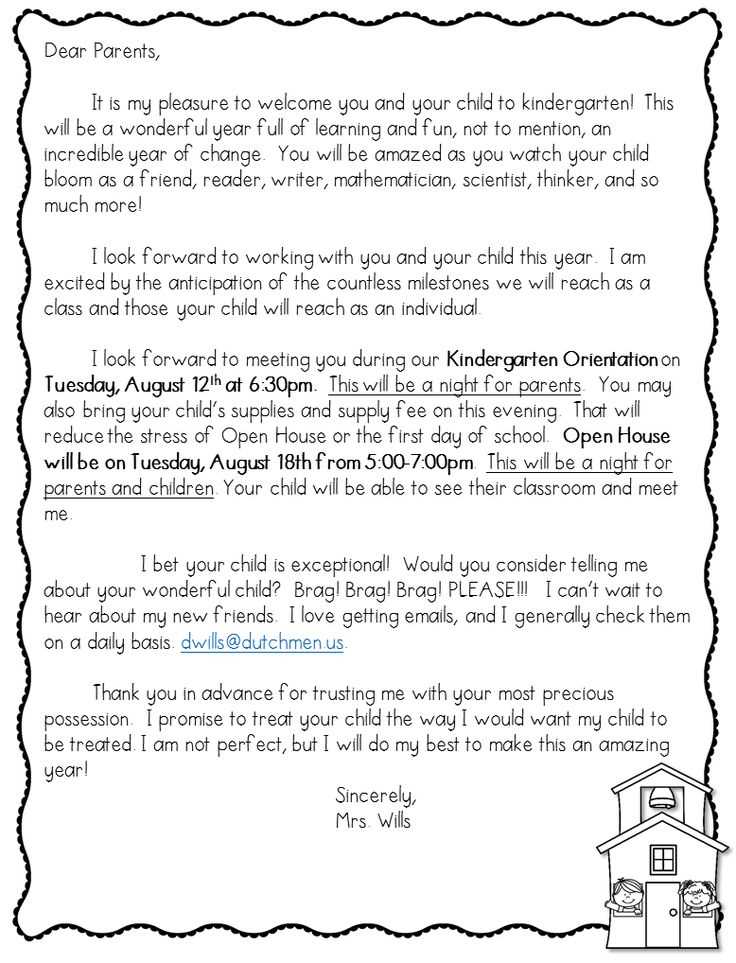
Start by introducing yourself and outlining your teaching philosophy. This helps parents get a sense of who you are and what your classroom environment will be like. Be clear about your communication preferences, whether through emails, school apps, or phone calls, so parents know the best way to stay in touch.
Use the next paragraph to provide specific expectations for the year. Set clear goals for what students will learn and how you plan to achieve these goals. This reassures parents that there is a structured plan in place for their child’s education.
Include a section that encourages parental involvement. Explain how they can support their child’s learning at home, whether it’s through reading, reviewing assignments, or attending school events. This not only invites collaboration but also strengthens the connection between school and home.
Close the letter with an open invitation for parents to reach out with any questions. Express your excitement for the year ahead and your commitment to helping each student succeed. Let parents know that you’re available and approachable, making them feel comfortable engaging with you.
Teacher Welcome Letter to Parents Template
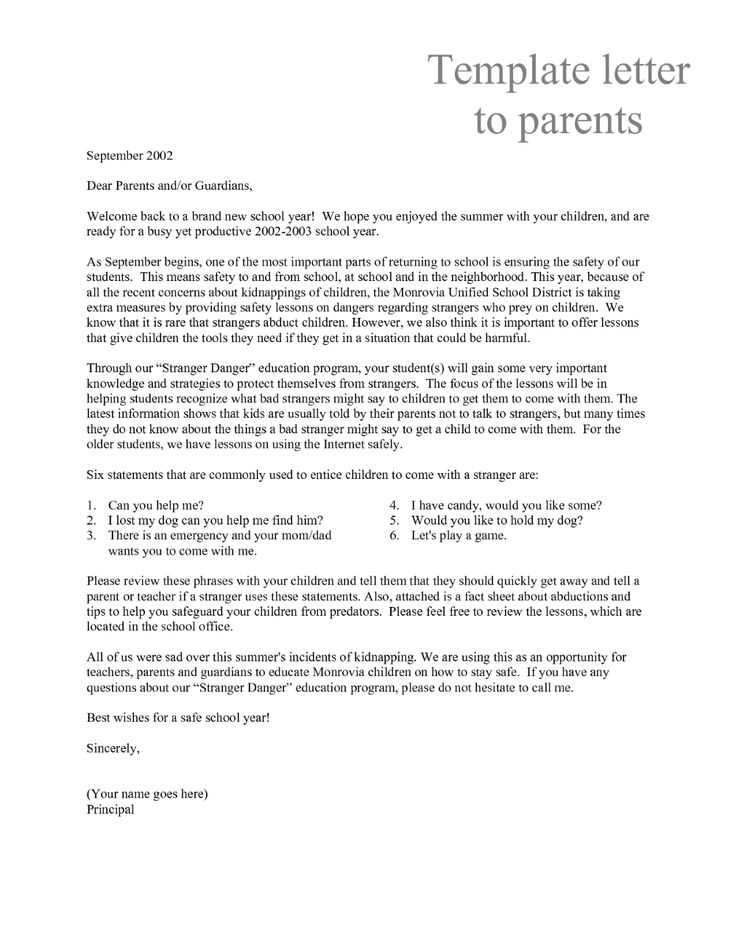
Begin by clearly introducing yourself with your name, position, and your teaching philosophy. Keep it warm and accessible, allowing parents to feel at ease with your approach. For example:
Dear Parents,
My name is [Your Name], and I will be your child’s [Grade] teacher this year. I am thrilled to have the opportunity to work with your child and support their growth both academically and personally. My goal is to create a safe and welcoming environment where every student feels valued and encouraged to reach their full potential.
Classroom Expectations and Communication
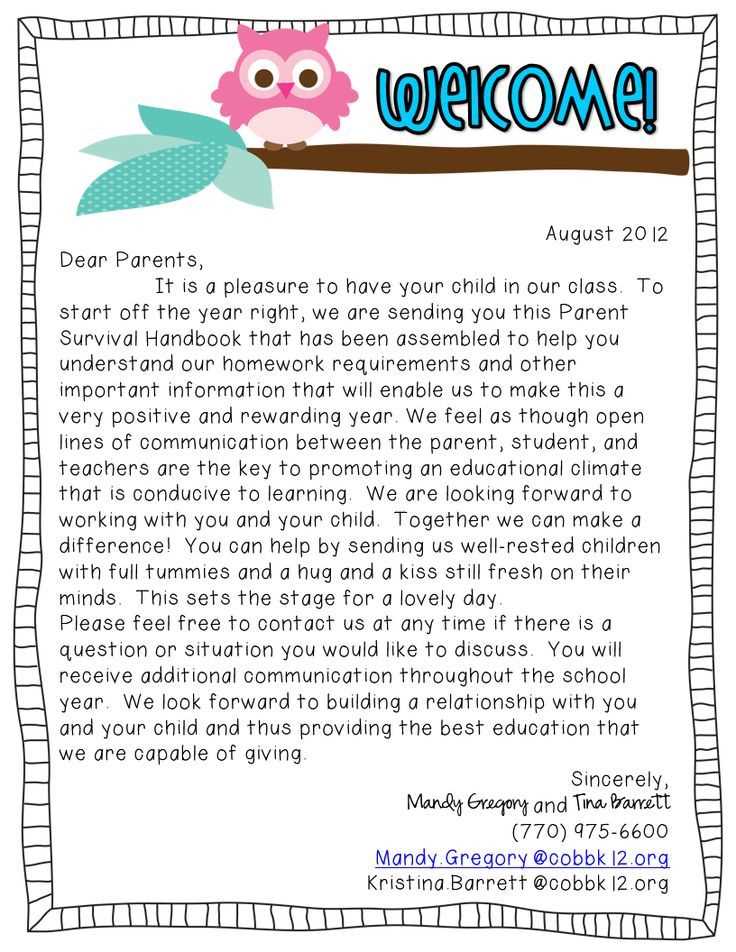
Outline your classroom expectations and preferred methods of communication. Let parents know how you plan to keep them informed about their child’s progress and how they can reach out to you. For example:
I believe in clear communication, and I will send regular updates on your child’s achievements and any areas of improvement. Please feel free to contact me via email or the school’s communication platform for any questions or concerns. I am always happy to hear from you and work together to support your child’s learning experience.
Important Dates and Upcoming Events
Provide a few key dates parents should keep in mind. This could include parent-teacher conferences, holidays, or special events. For example:
Our first parent-teacher conference will be held on [Date], and I look forward to meeting with you to discuss your child’s progress. Additionally, please mark your calendars for our [Event Name] on [Date]. It’s a wonderful opportunity for you to be involved in our classroom activities.
Thank you for entrusting me with your child’s education. I look forward to a fantastic year ahead!
Sincerely,
[Your Name]
How to Begin the Letter with a Friendly Tone
Open the letter with a warm greeting. Use the parent’s name if possible, as it helps create a personal connection from the start. Instead of a formal “Dear Parent,” consider a friendly “Hello [Parent’s Name]” to make the tone feel more approachable. This immediately sets the stage for a positive exchange.
Be Specific and Personal
Instead of generic phrases, mention something personal about the upcoming school year or classroom. For example, “I’m thrilled to welcome [Child’s Name] into my class this year!” This shows you are genuinely excited about the specific child and not just sending a template message.
Set a Positive and Inviting Tone
Avoid overly formal language. A simple “I look forward to working with you and your child to make this year successful” encourages collaboration and creates a sense of partnership. This way, parents feel that they are part of their child’s educational experience right from the first sentence.
Essential Information to Include About the Curriculum
Clearly outline the subjects and topics covered throughout the year. Parents should know what their children will be learning, from math concepts to language arts skills. Specify the learning objectives for each subject, explaining what students will accomplish by the end of the term.
Grade-Level Expectations
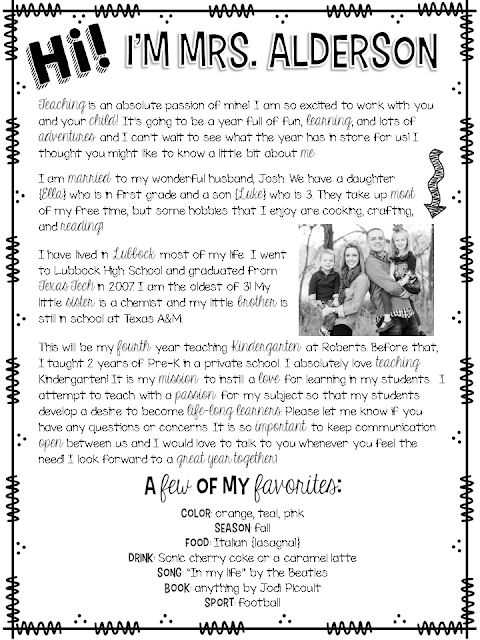
Communicate the specific skills and knowledge students should gain at each grade level. Include measurable milestones, so parents understand how their child’s progress will be assessed. For example, in math, this might include mastering multiplication tables or understanding basic geometry principles.
Teaching Methods and Resources
Explain the teaching approaches and materials used in the classroom. Parents appreciate knowing whether the class uses project-based learning, hands-on activities, or digital tools to enhance the curriculum. Mention any textbooks, online resources, or interactive activities that will support the learning experience.
Ways to Set Clear Expectations for Communication
Set a consistent communication schedule. Let parents know when and how you’ll be available for updates. Specify whether you’ll send weekly emails, hold regular phone calls, or use a class app for quick updates.
Define Preferred Communication Methods
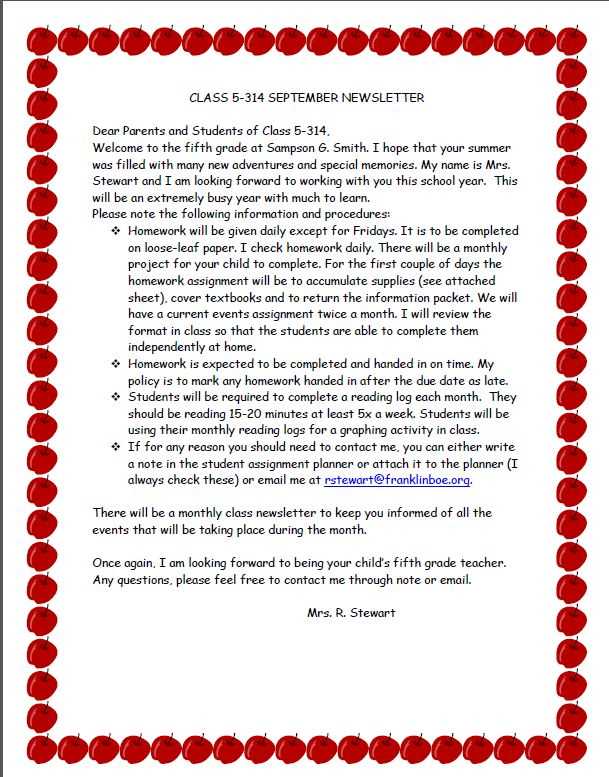
Clarify your preferred communication channels. Let parents know if emails, phone calls, or online messaging platforms work best for you. This will prevent confusion and ensure that messages are received promptly.
Establish Response Time Guidelines
Communicate your expected response times for inquiries. For example, let parents know you will reply to emails within 48 hours or that phone calls will be returned within a day. This helps manage expectations on both sides.
- Provide clear hours during which you are available for contact.
- Outline how long it may take to receive a response for non-urgent matters.
Encourage open and honest communication. Let parents feel comfortable sharing any concerns or questions, ensuring they understand that their feedback is valued.
Maintain a balance. While frequent updates are beneficial, avoid overwhelming parents with excessive communication. Establish a routine that works for both you and them.
How to Introduce Yourself and Your Teaching Style
Share a brief personal introduction to create an approachable atmosphere. Mention your background, experience, and passions that align with your teaching. This builds trust and connects you with parents on a personal level.
Be Clear About Your Teaching Approach
Describe your teaching philosophy. For example, highlight your focus on active learning, hands-on experiences, or the importance of critical thinking. Explain how these methods help students grow academically and socially.
Set Expectations for Communication
Let parents know how they can reach you. Outline your preferred communication methods, whether it’s through email, phone calls, or parent-teacher meetings. Make it clear when and how you’ll provide updates on their child’s progress.
Suggestions for Encouraging Parental Involvement
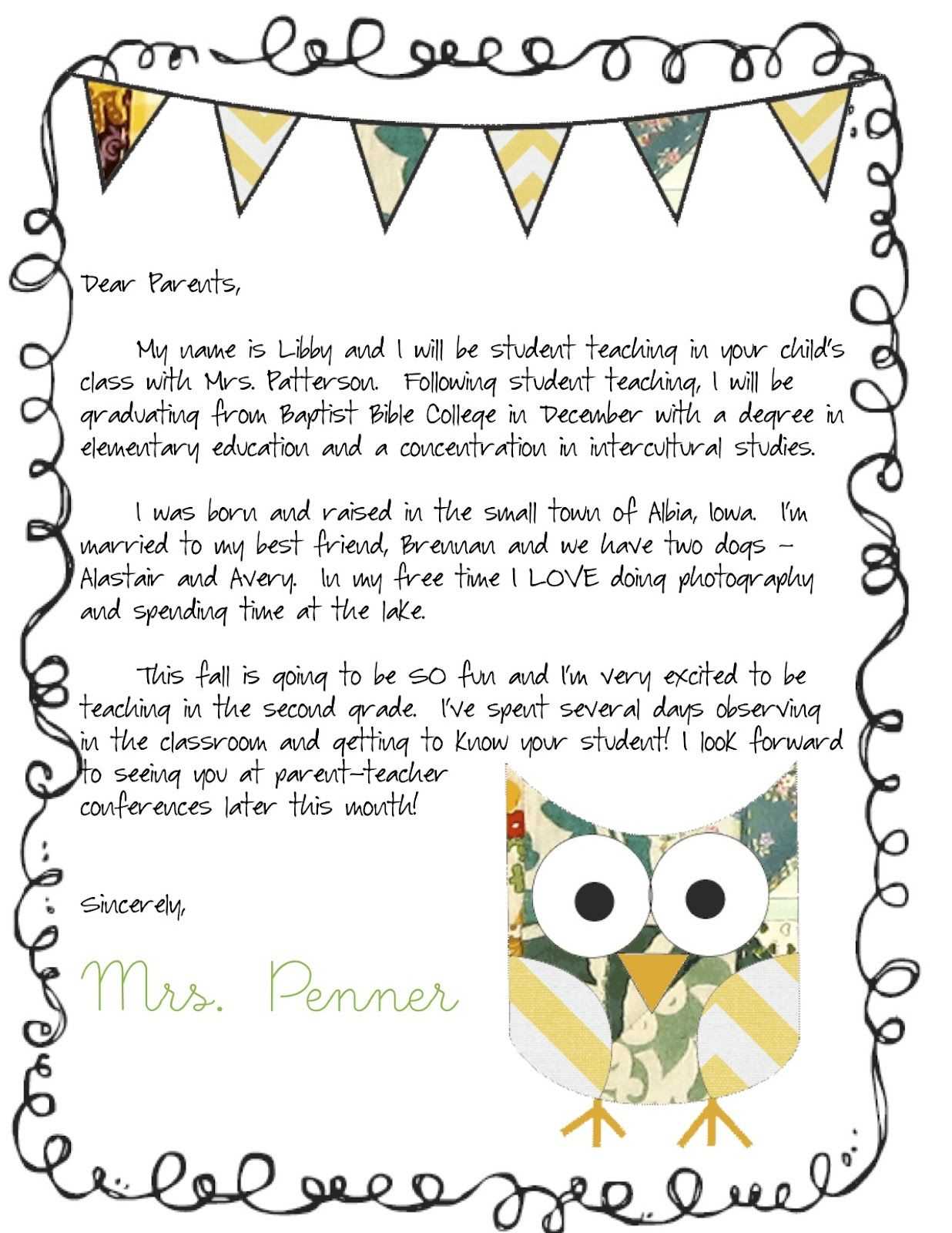
Communicate regularly with parents through weekly updates on classroom activities, upcoming events, and their child’s progress. Make sure the updates are brief, but offer enough detail to keep parents informed.
Host Parent-Teacher Conferences
Invite parents to conferences where they can discuss their child’s development and participate in goal-setting for the semester. Encourage them to ask questions and express any concerns they may have. These sessions create an open line of communication and build trust.
Provide Volunteer Opportunities
Offer various ways for parents to get involved, whether it’s assisting in the classroom, organizing events, or supporting school field trips. By offering flexible volunteer opportunities, parents can choose how best to contribute.
| Volunteer Role | Time Commitment | Parent Feedback |
|---|---|---|
| Classroom Assistant | 1-2 hours/week | Parents appreciate the chance to see how their child interacts in the classroom. |
| Event Organizer | 5-10 hours/month | Helps foster a sense of community among families. |
| Chaperone for Field Trips | 4-6 hours per trip | Parents enjoy participating in hands-on activities and bonding with students. |
Encourage parents to read with their children daily and suggest age-appropriate books. Reading together strengthens their relationship and supports language development.
Set up a class newsletter that includes highlights from the week, upcoming events, and helpful tips for parents to support their child’s learning at home. A consistent newsletter gives parents something to look forward to and keeps them connected.
Closing the Letter with an Invitation for Feedback
Invite parents to share their thoughts by providing a clear, simple way to communicate with you. Offer various methods of contact–email, phone, or in-person meetings–so they feel comfortable reaching out.
- Encourage parents to ask questions or provide feedback about their child’s progress or your teaching approach.
- Let them know you are available to discuss any concerns or suggestions they may have.
- Offer to set up a time for a meeting if they prefer a more personal conversation.
By asking for feedback, you show that you value their input and are committed to creating the best learning experience for their child. Keep the tone open and approachable, ensuring they feel heard and respected.